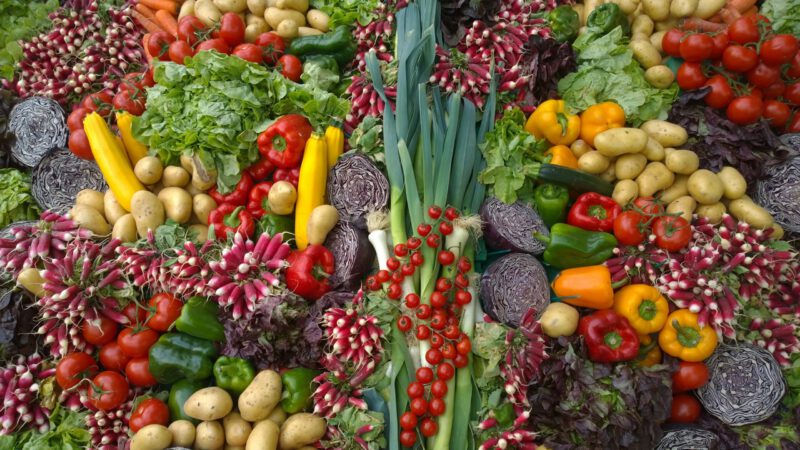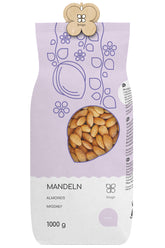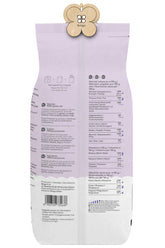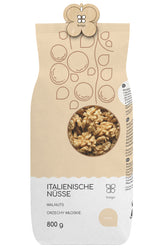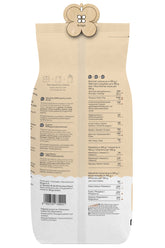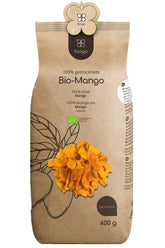Colors for health. What significance do the colors of vegetables and fruits have for health?
CONTENTS
- The importance of the colors of vegetables and fruits for health
- What do the colors of vegetables and fruits mean?
- White vegetables and fruits
- Green vegetables and fruits
- Red vegetables and fruits
- Purple vegetables and fruits
- Yellow and orange vegetables and fruits
- Basic rules for vegetables and fruit
We often wonder what rules we should follow to ensure a balanced diet, provide all the necessary vitamins and minerals—simply to positively influence our health. This topic doesn't have to keep us awake at night. Except in justified situations, it's also not worth supplementing ourselves with numerous artificial supplements from the pharmacy. It's enough to follow a few simple rules and enjoy health and energy every day. One of these is the rule of colorful vegetables and fruits.
The importance of the colors of vegetables and fruits for health
The rule of colorful vegetables and fruits states that to fully reap the health benefits of vegetables and fruits, you should choose different colored ones. Each color represents different vitamins and minerals they contain. They are all essential to our health, but it's difficult to remember which nutrients we find in each of them. Therefore, the principle of color selection gives us the confidence to comprehensively provide ourselves with the necessary nutrients without burdening our memory with detailed information about the nutrient content of each fruit and vegetable.
What do the colors of vegetables and fruits mean?
In terms of color, we can distinguish five main groups of vegetables and fruits: white, green, red, purple, yellow, and orange. Each of them contains unique compositions of valuable ingredients. To get the most out of them, it's worth consuming products from each of these groups daily.
White vegetables and fruits
This is where garlic comes in, known for its antibiotic properties. Other herbs in this group include parsley, cauliflower, beets, onions, leeks, and cabbage. They contain large amounts of flavonoids, which support our immunity and regulate blood pressure. They belong to the group of antioxidants, which means they have anti-inflammatory and anti-aging properties and are an element in cancer prevention.
Green vegetables and fruits
For many of us, this is the group we associate with the most health-promoting activity. And there's a lot of truth in this, because vegetables and fruits, such as all types of lettuce, peas, kiwi , broccoli, zucchini, and grapes, are a veritable treasure trove of vitamins and minerals necessary for our bodies to function. They owe their color to chlorophyll, which has a beneficial effect on the liver. They also contain many B vitamins, especially folic acid, which is very important for pregnant women and for problems related to anemia, among other things. Green vegetables and fruits are also a very good source of antioxidants and vitamins A, C, and E.
Red vegetables and fruits
The color of this group can be associated with the heart—and that's a good thing, because red vegetables and fruits like tomatoes, cherries, or peppers have a particularly beneficial effect on this organ. The more intensely red they are, the more they contain lycopene—a highly beneficial antioxidant. Its value is invaluable for maintaining normal blood pressure, adequate cholesterol levels, and heart function. Interestingly, it's one of the few compounds that improves our body after thermal treatment. Many products in this group also contain potassium, which has additional beneficial effects on these systems and organs.
Purple vegetables and fruits
Vegetables and fruits in this group owe their color to anthocyanins. Thanks to them, eggplants, red cabbage, blueberries, bilberries, and blackberries have antibacterial and antioxidant properties and are also helpful in preventing atherosclerosis. In addition, purple plants have a very positive effect on vision, especially twilight vision. They also contain polyphenols and vitamin C, so, like most vegetables and fruits, they have anti-cancer and anti-aging effects.
Yellow and orange vegetables and fruits
The color of apricots, tangerines, carrots , and pumpkins comes from the carotenoid beta-carotene, another compound with antioxidant properties. It has a positive effect on the condition of the skin and eyesight. It also protects against the harmful effects of UV radiation. Vegetables and fruits from this group are also a good source of vitamin C and lutein.
Basic rules for vegetables and fruit
We already know that the most important rule for vegetables and fruits is to match their colors. However, it's worth remembering other general rules for consuming these products:
– Eat fruits and vegetables EVERY DAY.
– Eat at least 5 portions of vegetables and fruit every day (one portion is about the size of your palm).
– Try to stick to the distribution: 3 PORTIONS of vegetables and 2 PORTIONS of fruit .
– Use seasonal vegetables and fruits.
– Eat vegetables and fruits RAW, less often after heat treatment.
– Choose whole fruits and vegetables rather than juices or other canned foods.
– If possible, try NOT to peel vegetables and fruit.
– To ensure good absorption of vitamins, add good sources of fat to vegetables and fruits (e.g. olives and oils, nuts, seeds).
- And let's repeat it again: Put vegetables and fruits together in terms of COLORS.
THE PUBLISHER'S CHOICE
Almonds 1 kg BIOGO
- £11.00
£13.00- £11.00
- Unit price
- / per
Walnuts 800 g BIOGO
- £8.00
£10.00- £8.00
- Unit price
- / per
Dried organic mango 400 g BIOGO
- £10.00
- £10.00
- Unit price
- / per
Dried White Mulberries 500 g ORGANIC
- £6.00
£7.00- £6.00
- Unit price
- / per
Dried organic figs 800 g BIOGO
- £27.00
- £27.00
- Unit price
- / per
Unpeeled buckwheat groats 1 kg BIOGO
- £3.00
£3.00- £3.00
- Unit price
- / per
Organic coconut flakes 500 g BIOGO
- £9.00
- £9.00
- Unit price
- / per
Organic oat flakes 600 g BIOGO
- £4.00
- £4.00
- Unit price
- / per
Organic cashew nuts 1 kg BIOGO
- £18.00
- £18.00
- Unit price
- / per
Milk thistle seeds 1 kg BIOGO
- £4.00
- £4.00
- Unit price
- / per




















































































































